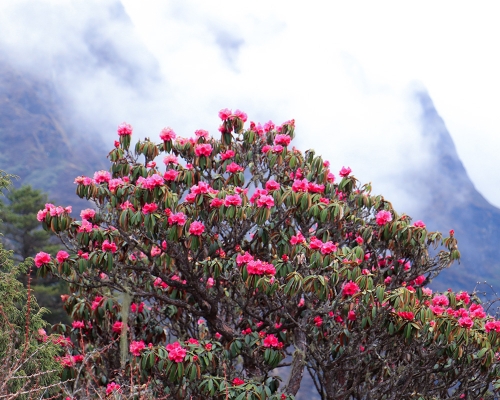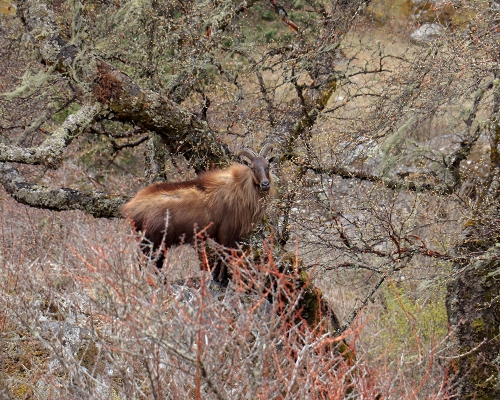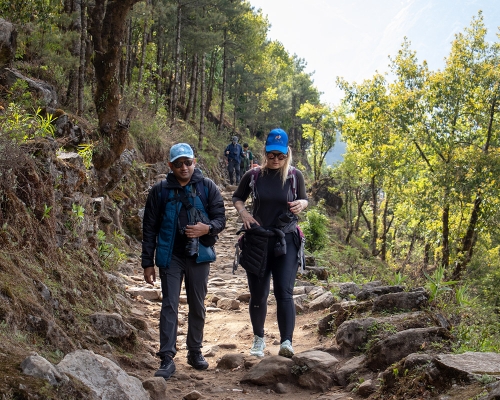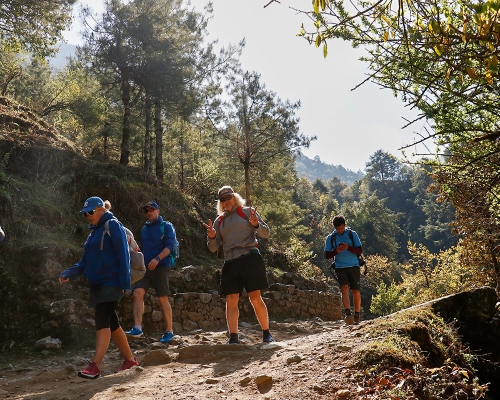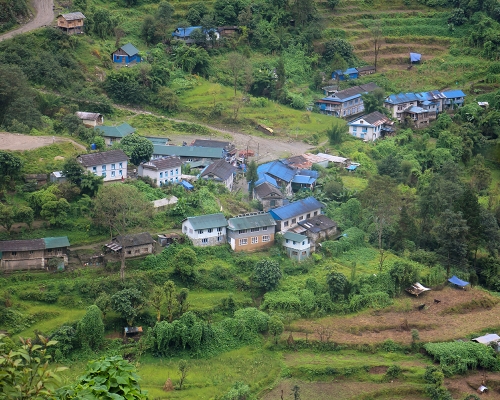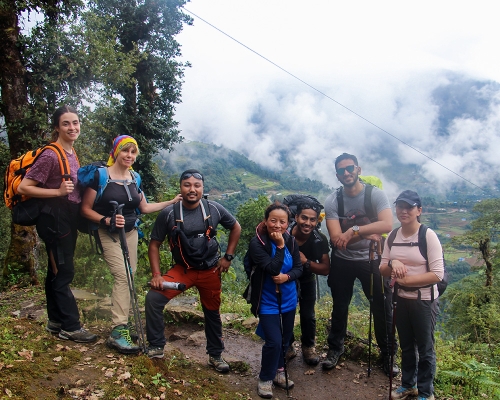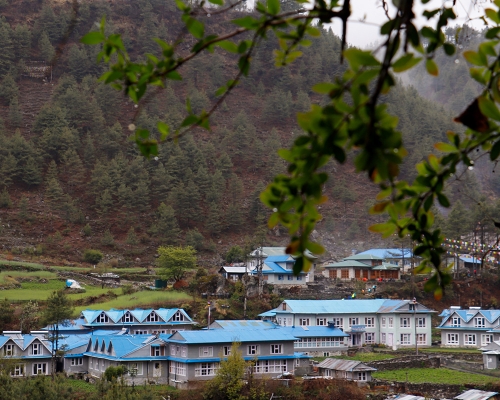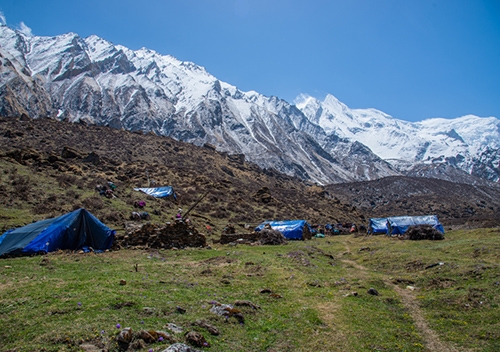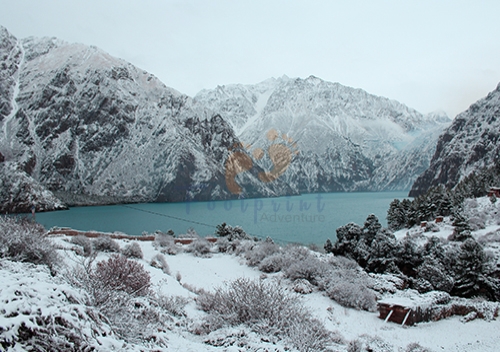Highlights of Pikey Peak Trek
- Witness the breathtaking views of Mount Everest,Kanchenjunga,Makalu, Lhotse, and other Himalayan giants from the summit of Pikey Peak (4,065 m).
- Experience one of Nepal's best sunrise and sunset views from the Pikey Peak Hill, the favourite viewpoint of Sir Edmund Hillary,
- Trek through picturesque Sherpa villages such as Jhapre, Lhammuje, and Junbesi, immersing yourself in their warm hospitality and rich Buddhist culture,
- Explore ancient Buddhist monasteries, chortens, and prayer flags like the popular Thupten Choling Monastery, a spiritual retreat for Buddhist monks and nuns.
- Get chances to spot diverse flora and fauna, including Himalayan endemics like red pandas, musk deer, and the colorful Danphe—the national bird of Nepal,
- Trek on less traveled routes, enjoying a peaceful and enriching journey away from commercialized trekking routes,
- Experience the local Sherpa culture, traditions, and authentic mountain lifestyle unspoiled by mass tourism.
The Pikey Peak Trek is a hidden gem in the lower Everest region, offering stunning panoramic views of the Himalayas, including Mount Everest, Kanchenjunga, Makalu, Lhotse, and many other high mountains. Pikey Peak standing at an elevation of 4,065 meters above sea level is renowned for its stunning sunrise and sunset views that illuminate the snow-capped mountains in golden hues. The trek is an unspoiled excursion that brings one through picturesque Sherpa villages, old monasteries, towering rhododendron woodlands, and green meadow hills, mixing perfectly natural attractiveness with vibrant cultures. The Pikey Peak Trek is a comparatively less crowded and much shorter than the traditional Everest Base Camp trek and is therefore one of the most ideal treks for anyone willing to spend their time here surrounded by breathtaking beauties of Mother Nature. The Pikey Peak Trek is highly influenced by the rich Sherpa culture and Buddhist traditions, and the trek included numerous chortens, prayer flags, and centuries-old monasteries. The name "Pikey" is derived from the Sherpa local deity that means the "Sky Above Nature", and the peak has religious meaning to the local people.
The trek to Pikey Peak usually commences with a beautiful drive from Kathmandu to Dhap Bazaar, which serves as the village of origin of the trek. The trek continues by progressing steadily through rainforest, cultivation land, and charming villages like Jhapre, Bhulbule and Lhamuje, where you can appreciate Sherpa hospitality. The higher you climb, the landscape changes to open ridges and alpine meadows, leading trekkers to the summit of Pikey, which opens up to a stunning 360-degree view of Himalayan giants. After witnessing the spectacular sunrise at the top, the descend leads travelers through scenic villages like Junbesi with the ancient monastery Thupten Choling occupied by Buddhist nuns and monks. The trek usually concludes at Phaplu, where a flight or automobile ride back to Kathmandu completes the journey. The Pikey Peak Trek is ideal for someone who wants a short but exciting Himalayan experience.
Major Highlights of Pikey Peak Trek
Pikey Peak Summit (4,065m)
Situated at an elevation of 4,065 meters, the Pikey Peak Summit offers one of the most spectacular panoramic views of the Himalayan range. From the summit, the trekkers are treated to a breathtaking 360-degree view of the Himalayas, including awe-inspiring views of Mount Everest, Makalu, Kanchenjunga, Lhotse, and Manaslu—all rising above the surrounding landscape. The summit is especially famous for its sunrise view, where the sun rises and kisses the snow summits with golden and orange hues, leaving a divine and serene environment.
Gaurishankar Conservation Area
The Pikey Peak trek follows you through the Gaurishankar Conservation Area, one of key ecological regions of Nepal. The conservation area is specifically renowned for its rich biodiversity and natural scenery, hence making it a key highlight of the trek. The conservation area itself consists of a variety of ecosystems, ranging from subtropical forests to alpine meadows, providing trekkers with an opportunity to experience a variety of flora and fauna.
Gaurishankar Conservation Area is inhabited by many endangered and rare species like the snow leopard, Himalayan tahr, red panda, and so on, with pheasant species, like the Himalayan Monal (Danphe), the national bird of Nepal.
The Gaurishankar peak, being within the conservation area, holds a religious significance to both Buddhists and Hindus of the area, and most locals consider it to be the abode of Lord Parvati and Lord Shiva.
Best time for Pikey Peak Trek
Spring (March to May) and Autumn (September to November) are the peak trekking seasons for Pikey Peak Trek. During spring, the weather is mild, rhododendron forests are in full bloom, and the skies are clear, with breathtaking views of Mount Everest, Kanchenjunga, and Makalu. The weather is very stable, and trekking is pleasant.
Similarly, Autumn is another ideal season for Pikey Peak Trek, with dry air, excellent visibility, and moderate temperatures, making the trekking comfortable and rewarding. Winter (December to February) on the other hand is the season for freezing temperatures and snowfall, making the trek tougher but offering solitude and empty trails. However, Monsoon (June to August) is not recommended due to heavy rainfall, slippery trails, and cloudy skies that obscure the mountain vistas, though the landscape turns lush and green.
Trekking Grade and Difficulty Level of Pikey Peak Trek
Pikey Peak Trek is classified as a moderate trek, therefore is ideal for both novice and experienced trekkers. The trek does not involve technical climb or altitude but requires superior physical fitness due to extended walking time and steady gain in altitude.
Although the highest point of the trek, Pikey Peak (4,065m), is not high as other high-altitude treks in Nepal, the slope and drop and varied landscape makes the trek moderately challenging.
On average, you will be hiking 5 to 7 hours a day, covering 8 to 12 km of rough terrain, forested pathways, and exposed ridges. The rise in altitude is gradual, reducing the risk for altitude sickness, but the trekkers must still have a good physical endurance caution for acclimatization.
The trek is perfect for beginner trekkers who want to experience the Himalayas without great hardship, as well as experienced trekkers wishing for a trekking adventure away from the mainstream trails with breathtaking views of Everest.


